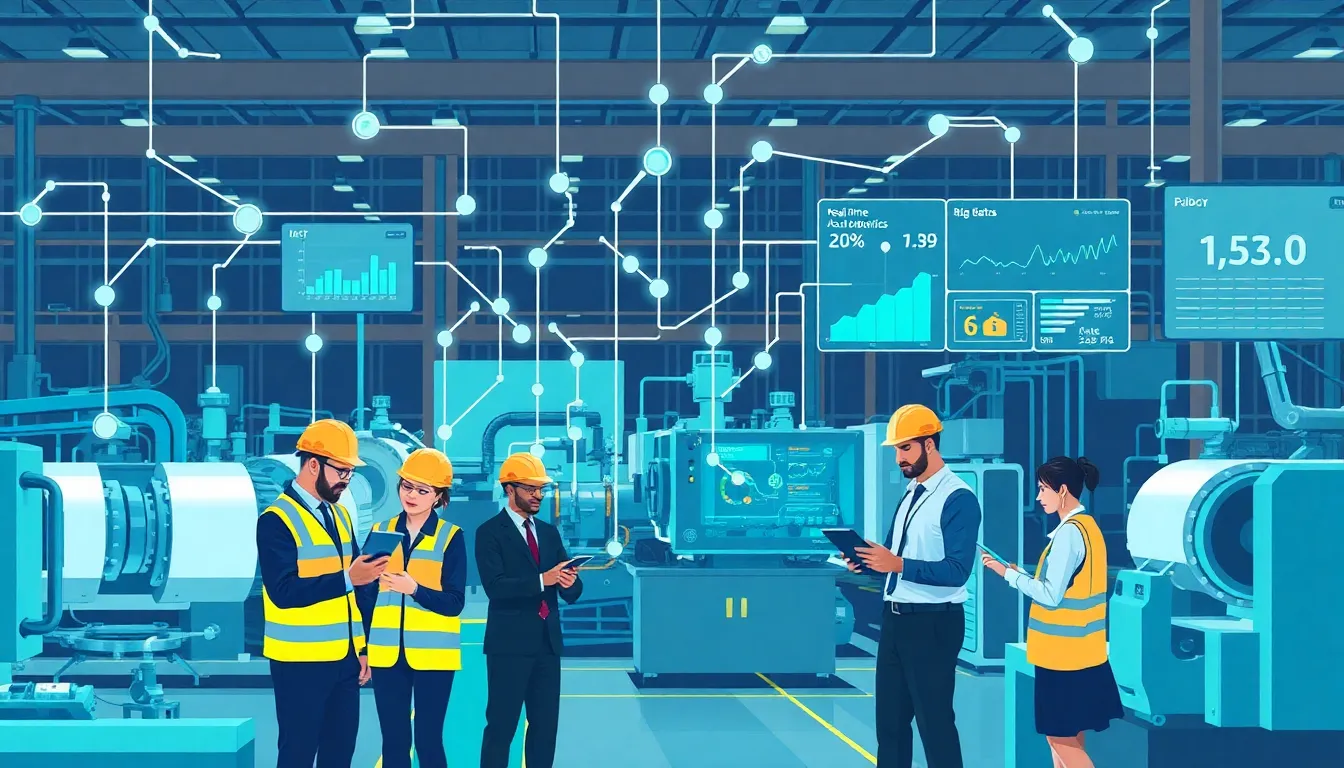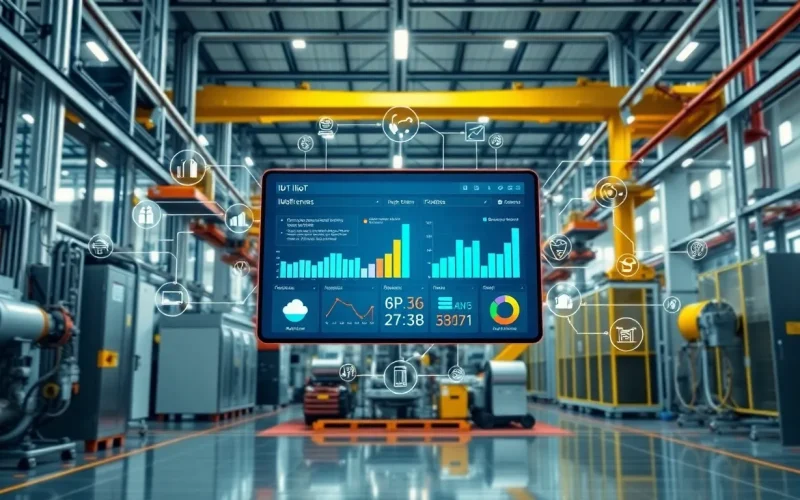Table of Contents
ToggleWelcome to the age where machines not only talk but also connect in ways that could make your grandmother raise an eyebrow. The Industrial Internet of Things (IIoT) revolutionizes how industries operate, making them smarter and more efficient. But where do you even begin with such a vast topic? Hang tight as we peel back the layers of this technological onion, exploring its key components, benefits, challenges, and even how to represent all this information in a snazzy infographic. Let’s jump into the electrifying world of IIoT, where data isn’t just data: it’s a goldmine.
Understanding The Industrial Internet Of Things

The Industrial Internet of Things represents a convergence of big data analytics, machine learning, and IoT technology tailored specifically for the industrial sector. Think of it as giving industrial devices an upgrade, akin to installing the latest iOS on your trusty smartphone. While traditional IoT connects smart devices in a lifestyle-friendly manner, IIoT focuses on enhancing machinery and processes in areas such as manufacturing, supply chain management, and energy. These enhancements lead to improved productivity, efficiency, and safety. In essence, IIoT is a big deal, think skydiving, but with data instead of adrenaline.
Key Components of IIoT
Understanding the IIoT requires a grasp of its core components, which include:
- Sensors: These little tech marvels collect data from machinery, converting real-world conditions into usable data.
- Connectivity solutions: From Wi-Fi to cellular networks, these are the highways that carry data from sensors to platforms.
- Data processing and analytics: This encompasses all the fancy algorithms and analytics that sift through the data to offer actionable insights.
- Cloud computing: The storage of vast amounts of data, accessible from almost anywhere, supports real-time analysis.
- User interfaces: Dashboards and applications make this treasure trove of data user-friendly, allowing operators to monitor and control systems effectively.
When these components work in unison, they transform industries by creating smart factories that anticipate issues before they become problems.
Benefits of IIoT in Industry
Implementing the Industrial Internet of Things presents numerous advantages in various industries, such as:
- Enhanced Efficiency: Machines that communicate reduce downtime through real-time monitoring and predictive maintenance.
- Cost Savings: By streamlining operations and reducing waste, businesses can see significant reductions in operational costs.
- Improved Safety: IIoT can monitor dangerous conditions, alerting operators to evacuate or adjust operations when needed.
- Better Quality Control: Continuous monitoring of processes ensures products meet high-quality standards consistently.
- Data-Driven Insights: Companies can leverage data analytics for smarter decision-making, optimizing their strategies far beyond conventional methods.
If IIoT were a superhero, it would be the one that saves the day by saving money and promoting a safer workspace.
Challenges and Considerations
Even though its myriad benefits, the journey into IIoT isn’t all easy sailing. Here are some challenges businesses face:
- Data Security: With great data comes great responsibility. Protecting sensitive information from cyberattacks is a top concern.
- Integration Complexity: Existing systems may require significant upgrades to accommodate IIoT technologies, leading to potential downtime.
- Skill Gaps: There’s a growing need for workers who understand both industrial processes and digital technologies, knowledge that’s not always readily available.
- Investment: Initial implementation costs can be daunting, leaving some businesses skeptical about the return on investment.
- Regulatory Compliance: Navigating the maze of industry regulations can complicate IIoT deployment.
Tackling these challenges requires careful strategy and forethought, ensuring that the shift to IIoT is not just change for the sake of change.
Creating Effective IIoT Infographics
Visualizing complex data in the form of infographics can simplify understanding IIoT’s impact. To craft a compelling IIoT infographic, consider the following steps:
- Identify Your Audience: Knowing who will view your infographic helps tailor the information complexity.
- Focus on Key Data Points: Highlight essential statistics, benefits, and challenges in a straightforward manner.
- Use Clean Design: Opt for a minimalist design with an organized layout, easy to digest at a glance.
- Engaging Visuals: Incorporate graphs, icons, and color coding to enhance engagement. Pictures tell stories, and data deserves its share of storytelling.
- Call to Action: Be sure to include a clear action for your viewers, whether it’s visiting a website for more information or reaching out for consultation.
Crafting a visually compelling and informative infographic can not only capture attention but also educate a wider audience about the transformative power of IIoT.
Future Trends in IIoT
As we venture deeper into the 21st century, several trends are emerging within the Industrial Internet of Things:
- Artificial Intelligence (AI) Integration: Expect AI to enhance predictive maintenance and operational efficiency, opening new possibilities.
- Edge Computing: This technology brings computation closer to the data source, reducing latency and increasing processing speeds.
- Sustainability: With environmental concerns rising, companies will increasingly use IIoT to monitor and reduce their carbon footprints.
- Advanced Robotics: Robotics will continue to evolve alongside IIoT, improving automation and yielding incredible results in manufacturing.
- Increased Security Measures: As cyber threats grow, we’ll see more robust security protocols and technologies developed.
These trends not only indicate where IIoT is heading but also hint at exciting future possibilities, making industries more responsive, resilient, and responsible.





